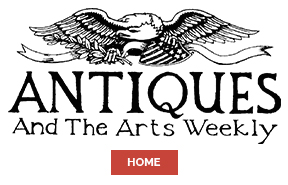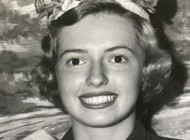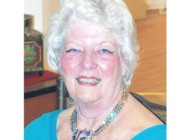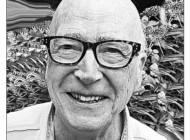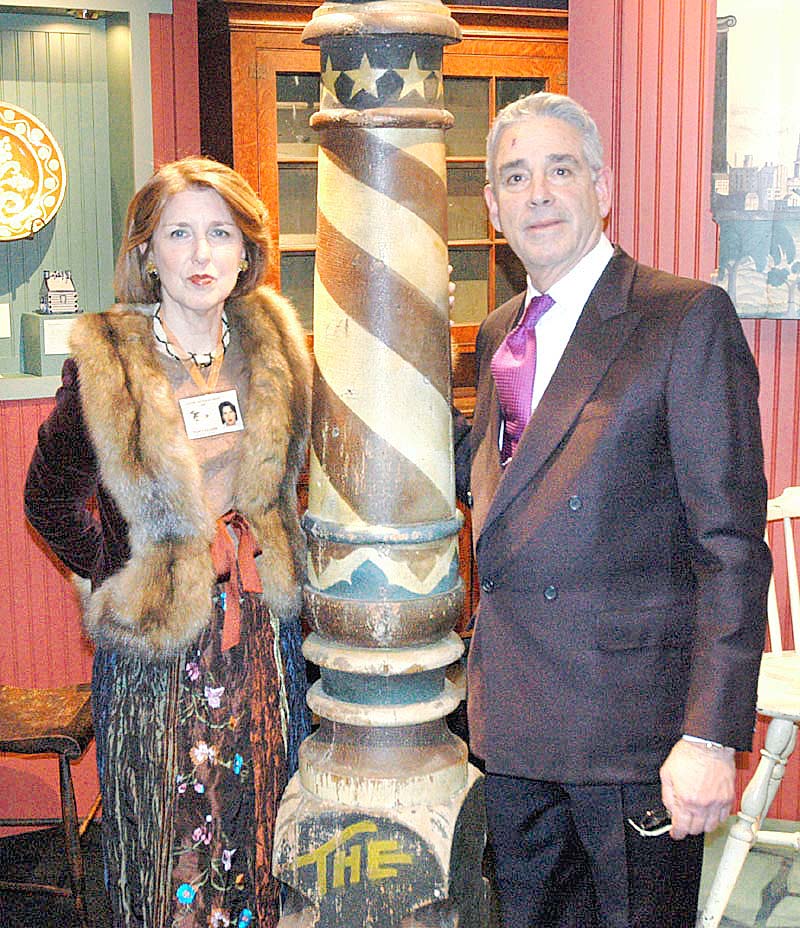
Nancy & Jim Glazer, 2006. Antiques and The Arts Weekly photo.
I remember Jimmy as a wonderful folk art dealer who had an exceptional eye for the unusual, the rare and the beautiful object. I loved to go into his booth at the Philadelphia antiques show and other shows because you knew you would find something special. I remember when he told me that I had to buy the largest Schimmel dog known, sitting in the front of his booth. I did and was so glad to have owned it. He was a true character with a great sense of humor. I spent many hours at shows chatting with him and his lovely wife, Nancy. I want to express my most sincere sympathy to Nancy and the family.
Also, as a member of the American Folk Art Society, I know I can speak for the other members of the group who bought many items from him, in saying that he was a well respected dealer who will be missed.
— Barb Gordon
Jimmy first got cancer 32 years ago. He was one tough guy.
I have nothing but great memories of him. In 15 years of doing the Philadelphia Show up the aisle from each other a lot can and did happen. Back then success was the norm.
Jimmy once brought in a great painted clock and across the aisle was another painted clock. We knew the other clock. It had run through a major auction house. It was fake. It wasn’t long before the fake one was off the floor.
Before the opening one night we focused on a great inlaid piece of furniture. Expensive but great. We contemplated buying it before the doors opened. After an examination we decided to buy it at a substantial price; the owner wouldn’t budge. Jimmy walked up the aisle toward his booth and literally seconds before I consummated the deal I saw Jimmy walking quickly back toward me. His body cranking back and forth. Both arms waving in the air to say “no, no!” I walked to meet him. He had discovered something about the history of the piece that made it another whole level of risk. There is probably plenty I have forgotten about the great purchase that never was, but I’ll never forget Jimmy’s flailing arms and his O-ring of a mouth uttering “no, no!”
Jimmy and I went to see an old collector. The house was musty, it stank. We sat and talked about objects had and objects missed; crazy deals that had come and gone. She urged us to look in the other room. There was a fair amount of redware. As we looked carefully, an increasing amount of it appeared repaired. This was a dusty old house with lots of build-up. We found a child’s-sized dower chest there and carefully looked it over. Some foot problems but nothing too serious. “You boys want to go upstairs?” she asked from the other room. Up we went. We thought that this must be where she kept the great stuff. A chest of drawers was on the right in the first room. I dropped to the floor to examine the feet. “Oh my god,” I shouted rising to my feet. “There is a dead animal under there or an awfully large dust bunny,” I said. Jimmy slowly, with trepidation, lowered himself to his stomach. He looked up at me, still juiced from seeing what surely was a rat, and a boyish smile crept across his face. “It’s her wig,” he said definitively.
We went back downstairs and purchased the chest. The wig jinxed it, we never made any money on that chest, nice as it was.
Jim was an antiquarian with deep knowledge of the Pennsylvania Germans and their decorative arts. Especially their redware. But his interests were broad, from great Eighteenth Century dower chests to Victorian shaving mugs, Jimmy loved the stuff. He was always generous with his knowledge. His charm as both a buyer and seller was unrivaled. It was always great fun to be out buying or selling with him. I can’t think of a better friend throughout my over 40 years in the antique business. As our friend Larry used to say, “Jimmy was number one.”
— David Wheatcroft
I first met Jimmy and Nancy Glazer at the old Jim Burke York Antique Show. I was a relative youngster, starting my business in Altoona, Penn., and had little awareness of Pennsylvania German decorative arts. Beginning at that show, over the years we developed a deep friendship. Jimmy freely shared with me all of his knowledge, teaching me about redware, painted furniture, boxes and many other aspects of the business. In addition, he introduced me to his clients, many of which I have worked with for years. Behind Jimmy’s gruff exterior, he was a generous and kind hearted man. He played a big role in my life as a friend and dealer, and I will miss him tremendously.
— Kelly Kinzle
Jim & Nancy Glazer were always fun to see at a show or antiques event, they always had great Pennsylvania Americana, even as far back as the mid 1970s when we first met them. I always enjoyed talking to Jimmy, he was knowledgeable and witty and we shared a lot of the same views on the business.
Ida refers to “all of us” from that period, as the Woodstock Generation of antiques dealers. There is no question that we all were — and still are — responsible for the proliferation of the antiques business as we know it.
Rest In Peace, Jim.
— Ken & Ida Manko
Although James and Nancy Glazer began their antiques business in 1970, my earliest memory of them was in 1975 at one of the outdoor summer shows managed by Russell Carrell. My parents purchased a remarkable Windsor yarn winder from the Glazers, and Nancy remembers me strongly encouraging them to buy it. I was 11 years old at the time. Jimmy and Nancy dined at our home in Greenwich (Conn.), toured the collection and quickly became friends. They were part of a generation of talented young dealers, scholars and collectors who redefined the world of collecting American folk art in the early 1970s, now seen as a golden age. The first of many great pieces we acquired from the Glazers was an extraordinary Pennsylvania pencil-post bed in original white paint.
Within a decade, the Glazers reached the summit of the American antiques business with an invitation to exhibit at the Winter Antiques Show in its prime. I vividly remember their first booth at the Winter show, centered by a newly discovered and very folky album quilt that Jimmy purchased for a then-record price at a small auction in New Jersey. They brought a new sensibility to an antiques show booth by hiring a professional design firm that developed a dynamic, museum-quality display, highlighting their choice pieces against vibrantly colorful walls and custom displays. This became their signature look. Jimmy was blessed with an instinctively good “eye” that allowed him to confidently venture beyond his specialty of Pennsylvania-German material into many other things, from pen wipes to New England painted furniture to heroic outdoor sculpture.
One of Jimmy’s major accomplishments was bringing renewed attention to great examples of Pennsylvania redware and stoneware, many decades before they became widely appreciated and collected. Wonderful examples of Pennsylvania redware passed through Jimmy’s hands, and he helped in assembling the best collections of these ceramics in modern times. When my parents’ collection was auctioned in 1981, Jimmy was a major buyer of their best Pennsylvania objects. He was a gutsy buyer and often stretched for the finest examples at major auctions and private transactions. He did not suffer fools and typically spoke in a blunt and direct manner. That was Jimmy.
We shared mutual lifelong friends in the business and frequently spoke on the phone. We met at shows and auctions along the east coast and got together on many occasions, in Connecticut and at their gracious home on Delancey Street in Philadelphia. Jimmy, my mother Peggy, and I were all born in Philadelphia and shared some common experiences and friends. Jimmy was a graduate of Germantown Academy (GA) when it was located at its original site. My family was also connected to that school. My four siblings and I attended GA at its new campus in Fort Washington, Penn., which opened in 1965.
My favorite and happiest memories of Jimmy all center around laughter — deep, overwhelming, uncontrollable laughter. The kind of laughter that makes it hard to breathe and sends drinks gushing through one’s nose. Of his time at GA and the school’s many unsuccessful efforts to lure him back for class reunions, and those centered around his eccentric father, Louie Glazer, and his antics in Atlantic City.
A torrent of colorful memories of the Glazers in those days cascade in my mind: their beloved dog Chief, getting to know their children when they were young, exhibiting at the same antiques shows, and Jimmy’s sharp personal style and great sense of fashion. Jimmy and I shared a common love of Windsor chairs, and over the past 50 years, some of the most outstanding examples traded back and forth between us. It is fitting that the last item I purchased from him was a Philadelphia Windsor armchair that I look at every day.
When Jimmy was first diagnosed with cancer over three decades ago, it seemed bleak and hopeless. Then we all got a collective wake-up call and met another side of Jimmy Glazer, the iron man, literally and figuratively. He was incredibly disciplined, single-minded, strong, determined and optimistic. Time after time, when that terrible illness came back, he fought it off again and again with grace and class, a true gladiator. Another man would have probably given up and been taken at his prime, but not so for Jimmy Glazer. He lived defiantly for the love of Nancy and his family.
— David A. Schorsch
Sharing a birth date with Jim Glazer bonded us together. Burt and I shared many laughs and good times with Jim and Nancy. I am so glad to have called him a friend.
— Helaine Fendelman
Jim and Nancy Glazer belong to a small group of antiques dealers that, very early on, collected and presented material in a modern context. They were among those who redefined how we live with Americana. I will of course miss Jimmy’s “eye”, but above all, I will miss his camaraderie and light-hearted personality.
— Fred Giampietro
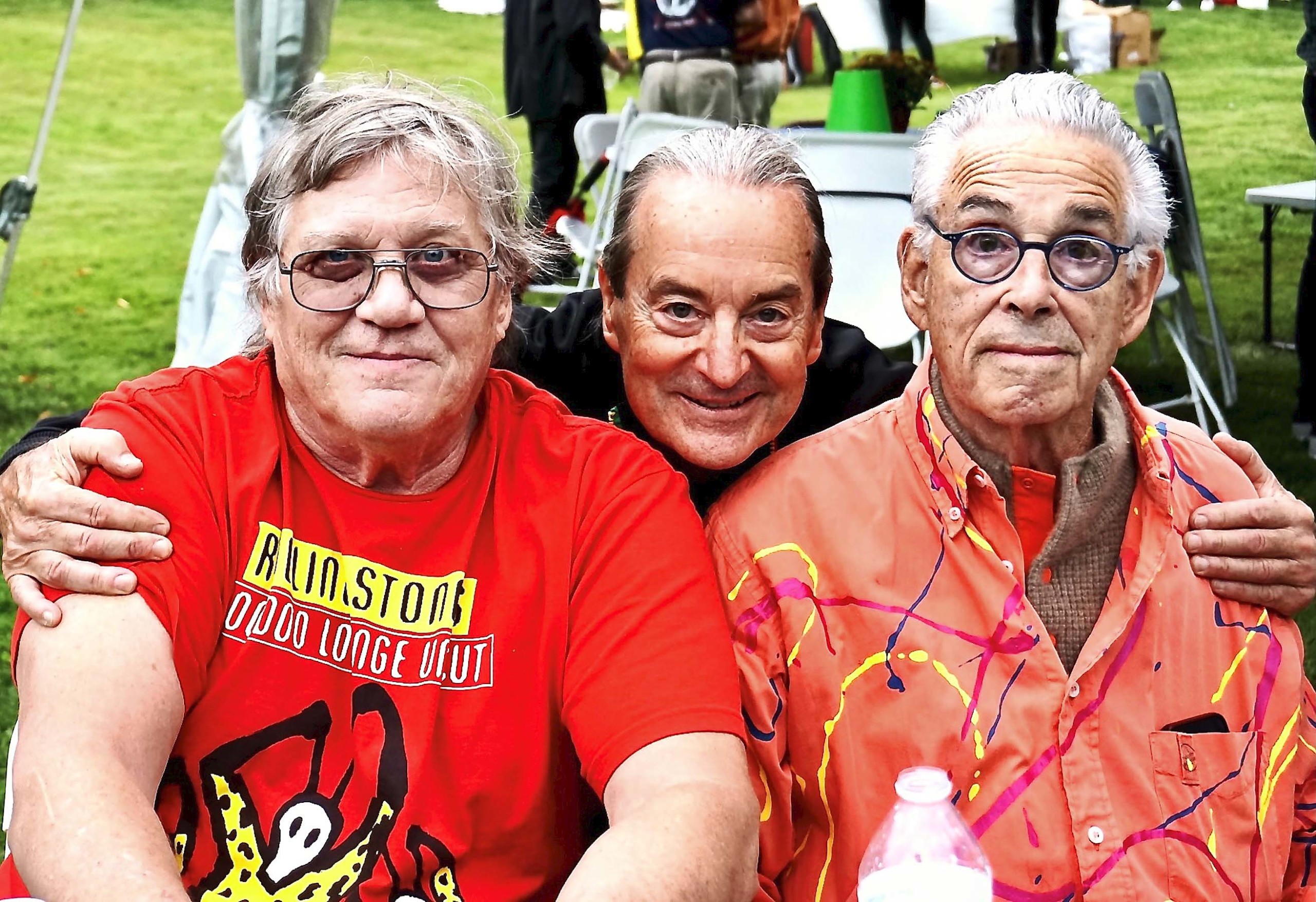
From left, Fred Koch, Bob Wilkins, Jim Glazer. September 2019. Photo courtesy Bob Wilkins.
Jim Glazer was a true “dealer’s dealer” — someone whose eye for form, surface and authenticity was extraordinary. I had the pleasure of exhibiting near him at the Philadelphia Antiques Show in the 1990s. Jimmy always treated fellow dealers with warmth and generosity. He had a true passion for the business. His booth was always filled with amazing, fresh to market painted furniture and folk art, including some incredible red-ware.
His passing is a serious loss to the American antiques world, but his legacy lives on in the great objects he handled and the many lives he touched. Perhaps most telling is the fact that, over the years, more than once, I have heard people refer to a truly great object, saying “Now that’s Jimmy Glazer quality!”
— Leigh Keno
My Blood Brother
It was in the spring of 1979, our fifth year in business and our first year exhibiting at Russell Carrell’s Southport/Westport Antiques Show, when we met fellow exhibitors James and Nancy Glazer. At the time, the Glazers were already established exhibitors at the venerable Winter Antiques Show (“East Side” as we all called it), along with Lillian Cogan, Gerald Kornblau, Peter Tillou, Marguerite Riordan and other legends of our industry. We were in awe of them!
It was during the run of that show that we began to know Jim and Nancy, not as icons, but as people. Of course, it helped that we liked each other’s “stuff,” and it helped even more that they were so much fun to pal around with. In the ensuing years, our friendship grew as we exhibited at other shows together, including for many years the Philadelphia Antiques Show at the 32nd Street Armory.
Then came a key, life-changing moment. In November of 1996, we were exhibiting at Jim Burk’s show at the York (Penn.) County Fair Grounds. During the setup, Nanny (as her close friends call her) introduced us to fellow exhibitor, Fred Koch. She then invited us to join her and Jim for a two-week vacation at Ron Pook’s villa, Lookout Cove, in Little Bay, Jamaica.
Nanny made it sound positively idyllic. The timing, coming after East Side, where Suzanne and I were now exhibiting, seemed the perfect opportunity to decompress from the stress of the show. We bit.
After we landed in Montego Bay, went through customs and emerged from Sangster terminal into the parking lot, we heard a voice say, “You must be Bob and Suzanne.” It was Fred’s wife, Maryanne. We jumped into Cocky’s van and he drove us on the long road from the airport, around the west coast of Jamaica through Negril to the tiny oceanside village of Little Bay.
When we entered through the gates that Fisher has fabricated, Jim and Nanny were there to greet us. Lookout was everything Nanny had promised us and more. Situated on the ocean, the property was beautiful, meticulously maintained by Naya, the gardener. Shorty, the majordomo and chef, prepared sumptuous Jamaican jerk-style meals for us daily, often featuring fresh-caught fish or shellfish delivered by boat from local fishermen. Margaret, his wife, managed the household. The entire staff was like a family that we were welcomed into.
Jim always told me that he credited Lookout Cove with helping him conquer his cancer. It was just that magical for him and Nanny, and it became magical for Suzanne and me, and for Fred and Maryanne too. Year after year, we all went back. It did not ever feel old.
One time when we were together on the pavilion at Lookout, looking out at the sun setting over the ocean, Jim honored me by declaring, “You are my blood brother.” That’s how close we had become.
In Jamaica, a typical greeting, particularly between men, is the word, “Respect” (or frequently “Respect Mon”), accompanied by a fist bump, direct eye contact and a warm smile. Here’s to you, my brother. Respect. I miss you.
— Bob Wilkins
Our friendship with Jim and Nancy Glazer goes back to the early days of Jim Burk’s York Show. His personality was big, authentic and thoroughly enjoyable. He was quick to share his knowledge, knew everybody, held bold opinions and sold captivating objects. During their lengthy career in the antiques business, the Glazers made lasting impacts with both new and seasoned collectors. His personal battle with cancer, however, was profoundly inspiring. Jimmy’s passing, in no small way, closes another chapter on an exciting era in the antiques world.
— Timothy & Pamela Hill
Jimmy and Nancy Glazer have been in the forefront — major movers and shakers in the “golden era” of American folk art and Americana — since the field gained collecting power and identity and prominence. Garbisch, Stewart Gregory, Austin Fine, Don and Faye Walters, Peter Tillou — Jimmy and Nancy were dedicated, important and consistent players — with creativity, style, energy and vision, intelligence and smarts, humor and warmth. The special things they pursued and offered opened and refreshed your eyes and appetite for great Americana and folk art.
Jimmy was an Ironman — He trained and succeeded in an athletic competition requiring extraordinary prowess and endurance – a 26.2-mile run, a 2.4-mile swim and a 112-mile bike ride. But the term is metaphoric for how he and Nancy conducted their business and ultimately, lived their lives: the strength and determination to live as long and as well as they could, doing what they loved.
— Nancy Druckman
